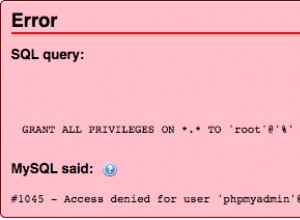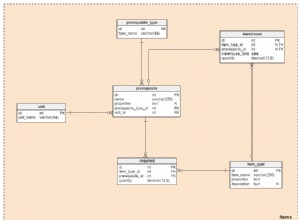Ecco una query sul catalogo di sistema che dovrebbe recuperare tutto ciò di cui hai bisogno (con un campo bonus per la chiave primaria inserito gratuitamente).
SELECT DISTINCT
a.attnum as num,
a.attname as name,
format_type(a.atttypid, a.atttypmod) as typ,
a.attnotnull as notnull,
com.description as comment,
coalesce(i.indisprimary,false) as primary_key,
def.adsrc as default
FROM pg_attribute a
JOIN pg_class pgc ON pgc.oid = a.attrelid
LEFT JOIN pg_index i ON
(pgc.oid = i.indrelid AND i.indkey[0] = a.attnum)
LEFT JOIN pg_description com on
(pgc.oid = com.objoid AND a.attnum = com.objsubid)
LEFT JOIN pg_attrdef def ON
(a.attrelid = def.adrelid AND a.attnum = def.adnum)
WHERE a.attnum > 0 AND pgc.oid = a.attrelid
AND pg_table_is_visible(pgc.oid)
AND NOT a.attisdropped
AND pgc.relname = 'TABLE_NAME' -- Your table name here
ORDER BY a.attnum;
Che restituirebbe risultati come:
num | name | typ | notnull | comment | primary_key
-----+-------------+-----------------------------+---------+---------------------+-------------
1 | id | integer | t | a primary key thing | t
2 | ref | text | f | | f
3 | created | timestamp without time zone | t | | f
4 | modified | timestamp without time zone | t | | f
5 | name | text | t | | f
- num:il numero della colonna
- nome:il nome della colonna
- digitare:il tipo di dati
- notnull:la colonna è definita come
NOT NULL - commento:qualsiasi
COMMENTdefinito per la colonna - chiave_primaria:la colonna è definita come
PRIMARY KEY - default:il comando utilizzato per il valore predefinito




